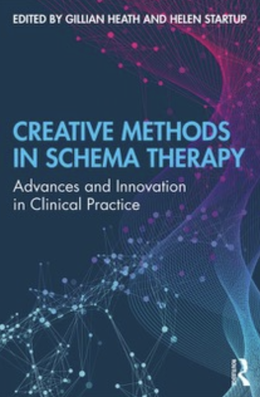Schema Therapy
Schema Therapy for the LGBTQ Community in New York City


What is Schema Therapy?
Short-term cognitive therapy helps overcome symptoms of depression and anxiety for the majority of patients. However, if you experience lifelong patterns of negative thoughts, emotions, and behaviors, a therapeutic approach combining cognitive therapy with schema therapy can be more effective. Based on cognitive and behavioral techniques, schema therapy applies useful principles from constructivist, psychodynamic, object relations, and gestalt therapies. Compared with standard cognitive-behavioral therapy, schema therapy places greater value on your emotions, emphasizes the therapeutic relationship between you and your therapist as a vehicle for change, and places a greater importance on the childhood origins of your current difficulties. Typically longer-term than cognitive therapy, schema therapy helps you modify your behaviors and the ways people feel and relate to you.
Schema therapy is especially helpful in treating chronic depression and anxiety, eating disorders (anorexia, bulimia, binge-eating), difficult couples problems, long-standing difficulties maintaining satisfying intimate relationships, and helping prevent relapse among substance abusers. Schema therapy addresses patients who feel hopeless about changing, when their self-destructive patterns seem to be a part of their identity. The negative patterns may have become so entrenched that they become rigid and resist standard cognitive-behavioral therapy.
Schema therapy was developed by Jeffrey E. Young, Ph.D. of the Cognitive Therapy Center of New York. The negative beliefs can lead to low self-esteem, lack of connection to others, problems expressing feelings and emotions, and excessive worrying about basic safety issues. The beliefs can also create strong attractions to inappropriate partners and lead to dissatisfying careers. Through a series of assessments you will learn to recognize what schemas affect you, understand the schema’s origins, and learn how to make lasting changes in your life.
Many patients who begin schema therapy have spent years in other types of therapies, gaining valuable insight but frustrated by their lack of progress. Schema therapy provides a straightforward, direct approach that goes beyond getting “in-touch” with your feelings. You work through structured assignments outside sessions that help you continually confront your negative beliefs. In each session, you work with your therapist to identify when your unhealthy patterns are repeating, and “empathically confront” them with the reasons for change. Your therapist supplies you with a partial antidote to meet your needs that may not have been met in your childhood.
Schema therapy is outlined in the Dutton book Reinventing Your Life, by Jeffrey Young, Ph.D. and Janet Klosko, Ph.D.
How Do I Know Where I'm Stuck?
What are the “belief systems” of schema therapy?
Disconnection & Rejection
1. Abandonment/Instability: You expect instability, unreliability, or loss of anyone you are close to.
2. Mistrust/Abuse: You expect others will hurt, abuse, humiliate, cheat, lie, manipulate, or take advantage of you.
3. Emotional Deprivation: You believe that your primary emotional needs for nurturance, empathy, affection, and protection will never be met by other people.
4. Defectiveness/Shame: You feel that you are defective, bad, unwanted, inferior, or invalid.
5. Social Isolation/Alienation: You feel isolated from the rest of the world, different or not part of any group or community.
Impaired Autonomy & Performance
6. Dependence/Incompetence: You feel unable to handle your everyday responsibilities competently without considerable help from others.
7. Vulnerability to Harm or Illness: You feel on the verge of a major financial, medical, natural, or criminal catastrophe, without evidence to support the belief. Focus may be on a medical condition, emotionally losing control, or an external area (airplanes crashing, elevators).
8. Enmeshment/Undeveloped Self: You are excessively emotionally involved with a partner or parents at the expense of your individuality.
9. Failure: You believe that you have failed, will inevitably fail, or are fundamentally inadequate relative to peers.
Impaired Limits
10. Entitlement/Grandiosity: You believe that you are superior to other people and not bound by the rules of reciprocity in normal situations.
11. Insufficient Self-Control/Self-Discipline: You find it continually difficult or refuse to practice sufficient self-control and frustration tolerance to achieve your goals, or to restrain an excessive expression of your emotions and impulses.
Other-Directedness
12. Subjugation: You feel coerced to surrender your needs and emotions to other people, avoiding anger, retaliation, or abandonment.
13. Self-Sacrifice: You voluntarily meet the needs of other people at the expense of your own gratification.
14. Approval-Seeking/Recognition Seeking: You emphasize gaining approval, recognition, or attention from other people, or fitting in at the expense of developing a secure and true sense of yourself.
Over vigilance & Inhibition
15. Negativity/Pessimism: You experience a pervasive, lifelong focus on the negative aspects of life (pain, death, loss, disappointment, etc.)
16. Emotional Inhibition: You excessively inhibit spontaneous action, feelings, or communication, avoiding disapproval by others or feelings of shame, or the possibility of losing control of your impulses.
17. Unrelenting Standards/Hyper-criticalness: You feel that you and other people must strive to meet very high internal standards of behavior and performance, usually to avoid criticism.
18. Punitiveness: You feel that people, including yourself, should be punished harshly for mistakes.

